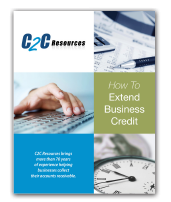Debt collection calling is not the type of task most employees get excited about. Typically, in-house campaigns take employees out of their comfort zone. For most small businesses it is a task given to employees in addition to their normal job responsibilities. Don’t waste your time and money with an inefficient debt collection calling campaign. Instead, be successful from the start!
Here are the top five things to do when making collection calls:
Always prepare for excuses.
Unfortunately, most debtors will not be quick to offer payment options. Don’t allow yourself to get flustered by excuses. Instead, be prepared. Here are the most common excuses you will hear:
The check is in the mail.
How to respond: Ask for the date of the check, amount, address where it was sent and check number.
I never received the invoice.
How to respond: Always give the customer the benefit of the doubt. This is a great time to verify their preferred method for their invoice: email or mail. Always follow-up this discussion with asking how the customer will pay the past-due balance.
Our business is going through financial problems.
How to respond: Work to set up a payment schedule with the customer.
We completed the wire transfer yesterday.
How to respond: Ask for the routing and banking information. The customer could be telling the truth, but you need all of the information you can collect to verify the validity and make the most of the call.Â
Do your research before the call.
Learn as much about the customer as possible before picking up the phone. Common information to find out includes:
- Has the customer had payment problems in the past or is this uncharacteristic?
- Did the sales person have concerns about the account?
- Terms of sale
- Payment due date
- Exact amount due
Always be professional.
Never threaten a customer for payment. The goal of the collection call is not merely to successful collect payment; you should try to also maintain the business relationship if possible. When on the collection call, follow these tips:
- Never multi-task. Be completely focused on the call.
- Speak slowly and take more pauses when you speak.
- Never eat food, drink a drink or chew gum while on the phone.
- Go into the call with a positive attitude. Your tone and inflection of voice will mirror your attitude.
Ask open-ended questions.
You will never get paid if you only ask questions with Yes and No answers. Let’s look at a scenario:
Option A: Do you plan on paying us soon?
Option B: What date can I expect payment from you?
Option B is obviously the better choice. You are committing the customer to a specific date. Make it a goal to commit the customer to something before getting off the call: full payment, partial payment, or even a date that they can let you know their payment plan (Remember, sometimes your main point of contact does not control the money within the business.)
Be deadline-driven, but still flexible.
Debt collection requires you to walk a fine line. You need to be assertive, but not too pushy. Always emphasize the urgency of the matter and try to have the customer commit to dates for payment.


 Experience
Experience At C2C Resources, we like to provide information not only to our existing 25,000+ customers but also to would-be customers, to help them improve their in-house collection processes.
At C2C Resources, we like to provide information not only to our existing 25,000+ customers but also to would-be customers, to help them improve their in-house collection processes.